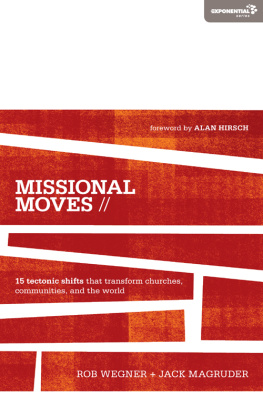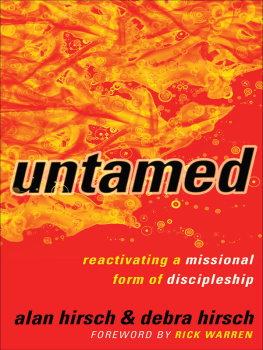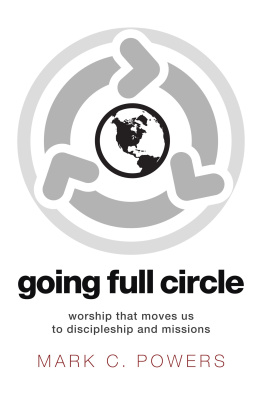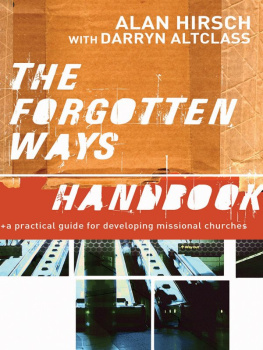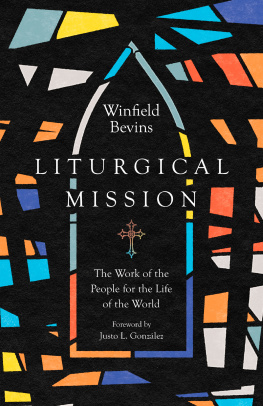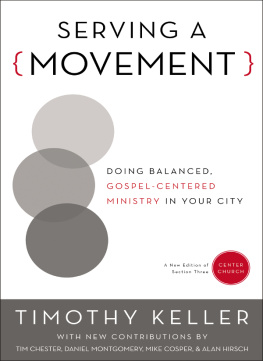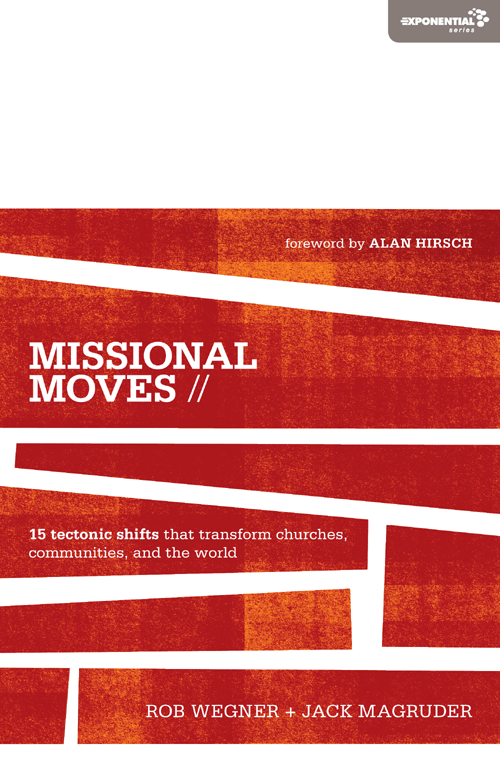I have no doubt that the nest of foundational theology, paradigm shifts, and key ideas that together inform, shape, and constitute what we call the missional movement represents the only viable future for biblical Christianity in the Western world. I, along with many of the key church leaders and thinkers in our time, believe this is undeniable. Taken as a whole, Christianity is on the retreat in every Western cultural context. Witness the wholesale decline of biblical Christianity in Europe, Australia, Canada. In Europe alone, the birthplace of Christendom, Christianity is all but extinct.
This secularizing phenomenon can also be seen in the population centers of America, previously considered a bastion of Christianity in the West. Churches on the East Coast, in the Pacific Northwest, and even in the Midwest are all experiencing trended decline. Whether we like it or not, the principles, methods, and thinking about the church that worked in the past and were well-suited for the past are simply unable to address the complex context of the twenty-first century. They no longer square with our situation and the profound challenges it represents to us. This decentering means that the forms of the church produced when the church was at the cultural center of society what historians call the Christendom paradigm are fading, and we are now entering what sociologists call a post-Christian culture.
This is a radical shift that necessitates an equally drastic modification in the way in which we go about being a people faithful to Jesus and his cause. It can no longer be business as usual. The naive expectation that a simple reappropriation of well-worn formulas will produce a revitalization of the church, faith, and mission is not only foolish but can actually jeopardize the mission of God.
This does not mean that the gospel has lost its power. Far from it. The gospel of the kingdom remains the sole source for the wholesale renewal of the entire cosmos, let alone of society and the human heart. But these massive cultural shifts do mean that the commissioned carrier of the gospel the church must now find new and more fruitful ways to meaningfully deliver it to a needy world. This is what the missional church seeks to achieve a recalibration of the church around the eternal purposes of God in and through the church of Jesus Christ.
This is no small task. It requires that we reconsider just about everything weve been doing, especially our culturally relative ways of doing church. Old habits of thinking and patterns of behavior must be thoroughly audited and evaluated to see if they are still consistent with Gods purposes in and through his people. This requires theological imagination (to break the hold of the old paradigms and usher in the new), missional leadership (to negotiate change and be able to lead Gods people into their own future), and courage (in the face of opposition both within and outside of the church). It will also require a serious commitment to ecclesial experimentation and innovation.
Granger Community Church in South Bend, Indiana, is a church that has risen to this challenge. Rob Wegner, Jack Magruder, Mark Beeson, Tim Stevens, and the other senior leaders at Granger embody the kind of imagination, courage, and leadership needed in the church today. With holy joy I have observed and at times even participated in what they are doing. In this book you will encounter leadership that has a clear vision of the future, a willingness to take risks and put the system on the line to achieve that vision, a great change process that enables a megachurch (and they are that!) to move to a missional mindset, and a capacity to create working models of church that ordinary people can live into.
Rob and Jack have been at the heart of this ecclesial re-architecting. They are joyous, humble, intelligent, compassionate, and highly committed disciples of Jesus. They are the right men for the job. It is my hope that with this book, Rob and Jacks influence will extend to the broader church and provide many with a model of apostolic leadership, sorely needed in our day, and a model of the missional church that can advance the cause of Christ in our time.
Alan Hirsch, founder of
Forge Missional Training Network
INTRODUCTION
A Reverse Tsunami
Weve traveled to India more times than we can remember. Both of us lost count when the red ink from the Indian Customs stamps in our passports bled into the myriad others. But one of the most memorable trips one that stands out abruptly took place shortly after the tsunami hit the southeastern coast of India in 2004. On December 26 the world watched in horror as a massive tsunami destroyed more than 250,000 lives and rocked more than eleven nations. There, on the ground, we saw firsthand the absolute devastation wrought by this seismic event. We were taken to places and told, Here is where the village used to be. Everyone was washed out to sea along with all of their homes.
The whole world stood in awe at the destruction wrought by waves of water that overturned cars, destroyed homes, and killed thousands of people. But following that first tsunami of destruction and devastation came another tsunami not of death and destruction, but of unprecedented generosity and compassion. As the waters receded, millions of people flooded the land with acts of kindness and sacrificial service: feeding the hungry, clothing the naked, and building homes for the homeless.
What we have here are two types of tsunamis.
The first wreaks devastation and destruction. Caused by earthquakes resulting from the collision of tectonic plates, it is the product of an explosion of energy equivalent to 23,000 Hiroshima-type atomic bombs. Yet as powerful as this tsunami of destruction can be, we want to suggest that the opposite a tsunami of love and service can be even more powerful. We call this a reverse tsunami.
Imagine a tsunami that, rather than leaving orphans when it recedes, leaves every child loved and with a family. Imagine a tsunami that, when the waters flow back out, sweeps away hunger. Imagine a tsunami that sweeps away every form of injustice: slavery, sex trafficking, racism, and generational poverty. Imagine a tsunami that sweeps away every disease. Imagine a tsunami that sweeps away all spiritual darkness and oppression, where every person knows the joy of redemption and salvation, where the song Amazing Grace is on the lips of every tribe, every tongue, and every nation.
In the prophecy of Habakkuk, we find a vision like this:
For the earth will be filled
with the knowledge of the glory of the L ORD,
as the waters cover the sea.
Habakkuk 2:14
Habakkuk is captured by a vision, not of destruction and death, but of Gods global glory. This is a flood that brings healing to the nations. It is a tsunami of transformation, where the eternal realities of heaven and earth meet. But how does this transformation begin? Like all tsunamis, it begins with an earthquake. After the Sabbath, at dawn on the first day of the week, Mary Magdalene and the other Mary went to look at the tomb.

